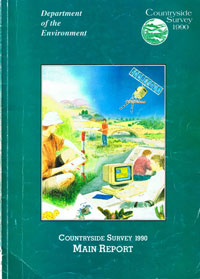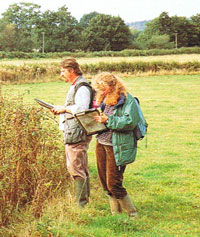
Countryside Survey 1990 became the third major ITE survey. The UK government’s first Environment White Paper included a commitment to provide a statistical report on the state of the environment. As part of the process, the 1990 Survey was intended to help monitor the impacts following such policy initiatives as those of ‘agricultural set-aside’ and more explicitly the agri-environmental schemes arising from the Agriculture Act of 1986. It would also contribute to the Biodiversity Action Plan being developed by the Department of Environment as part of the UK commitment to the Convention on Biological Diversity, signed at the Rio de Janiero Earth Summit in June 1992.
Drawing heavily on the insights gained from ECOLUC, ITE was able to develop a Countryside Survey in the widest sense, which focused on those common features and habitats most likely to influence the public perception of rural Britain. More specifically, the project was to:
- Establish the stock of countryside features of Great Britain in 1990, including information on land cover, landscape features, habitats and species
- Determine change by reference to earlier surveys in 1978 and 1984
- Provide a firm baseline, in the form of a database of countryside information, against which future change could be assessed.

